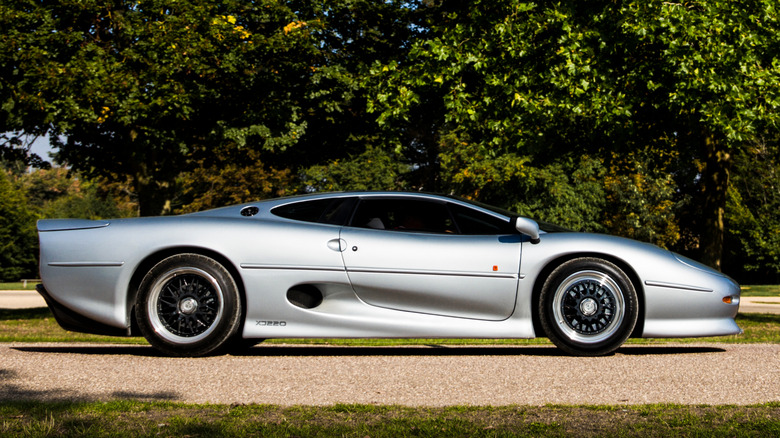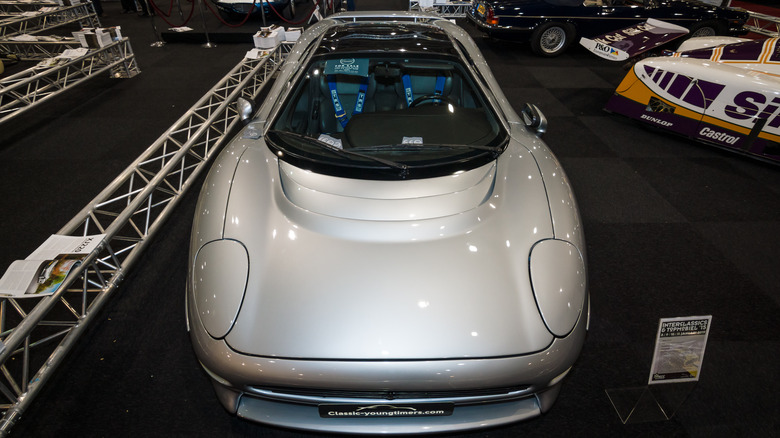Why You Won't See The Jaguar XJ220S Supercar On US Roads
The Jaguar XJ220 was and is one of the most famous, talked-about supercars of all time. As of its 1992 debut, the mighty XJ220 was not only the fastest Jaguar on the market but, as Jaguar itself notes, the fastest production car in the world. The model's turbocharged V6 puts down 542 horsepower, flying from 0 to 60 miles per hour in under 4 seconds to a recorded top speed of 213 miles per hour.
With a major facelift that replaced nearly every inch of aluminum with carbon fiber and a complete engine rebuild cranking the plant up to 680 horsepower (via Supercars), the XJ220S model improved on the stock version to the tune of 0 to 60 miles per hour in just 3.3 seconds. It smashed the implied top speed of the XJ220 name, putting up a top mark of 228 miles per hour.
The S marque was as close as Jaguar or any of its competitors would come, at the time, to putting a racing car on the road. American motorheads have never been shy about putting nonsensical amounts of power on the road and many have a soft spot for British muscle. What kept the XJ220S away from these shores?
Jaguar's XJ220 ambitions didn't pan out
The XJ220 may have had brilliant engineering, but it was a business disaster for Jaguar. The design process dragged on for four years, beginning with a spectacular V12 concept car (via Jaguar Heritage). The concept was so strong that, as Hemmings notes, hundreds of prospective buyers laid down £50,000 each – approximately $85,500 in 1988 dollars — to reserve a model when it hit the market.
What followed, as related to PistonHeads by the director of engineering Jim Randle, was four years of sky-high promises compromised by reality. Jaguar swapped the V12 for a seen-it-before V6. The promised all-wheel-drive became rear-wheel. Styling was redesigned. Many buyers took exception to the sweeping changes from the 1988 prototype — in fact, some even took Jaguar to court (via AutoNews) to get their reservation fees back. In the end, Jaguar sold just 281 of the XJ220's planned 350-car run.
Already absorbing a loss on the stock XJ220, Jaguar faced multiple obstacles to make the XJ220S road-legal in the United States. Dim headlights, carbon fiber bodywork, and a blistering top speed (via Miracle Ford) would all have raised questions with the NHTSA. Ultimately, Jaguar only built six units of the XJ220S model before cutting its losses. A new opportunity has since arisen for American Jaguar enthusiasts, however. Like many other short-run, highly desirable collector cars, the XJ220 and XJ220S qualify for the Show and Display exception to NHTSA regulations (via Show or Display). United States regulators have allowed the import of the Jaguar supercar since 2001 on the basis of engineering innovation and historical significance.

